Category: Hunting Blog
Working To Improve the Deer Herd and the Soil: Planting Food Plots with The Release Process
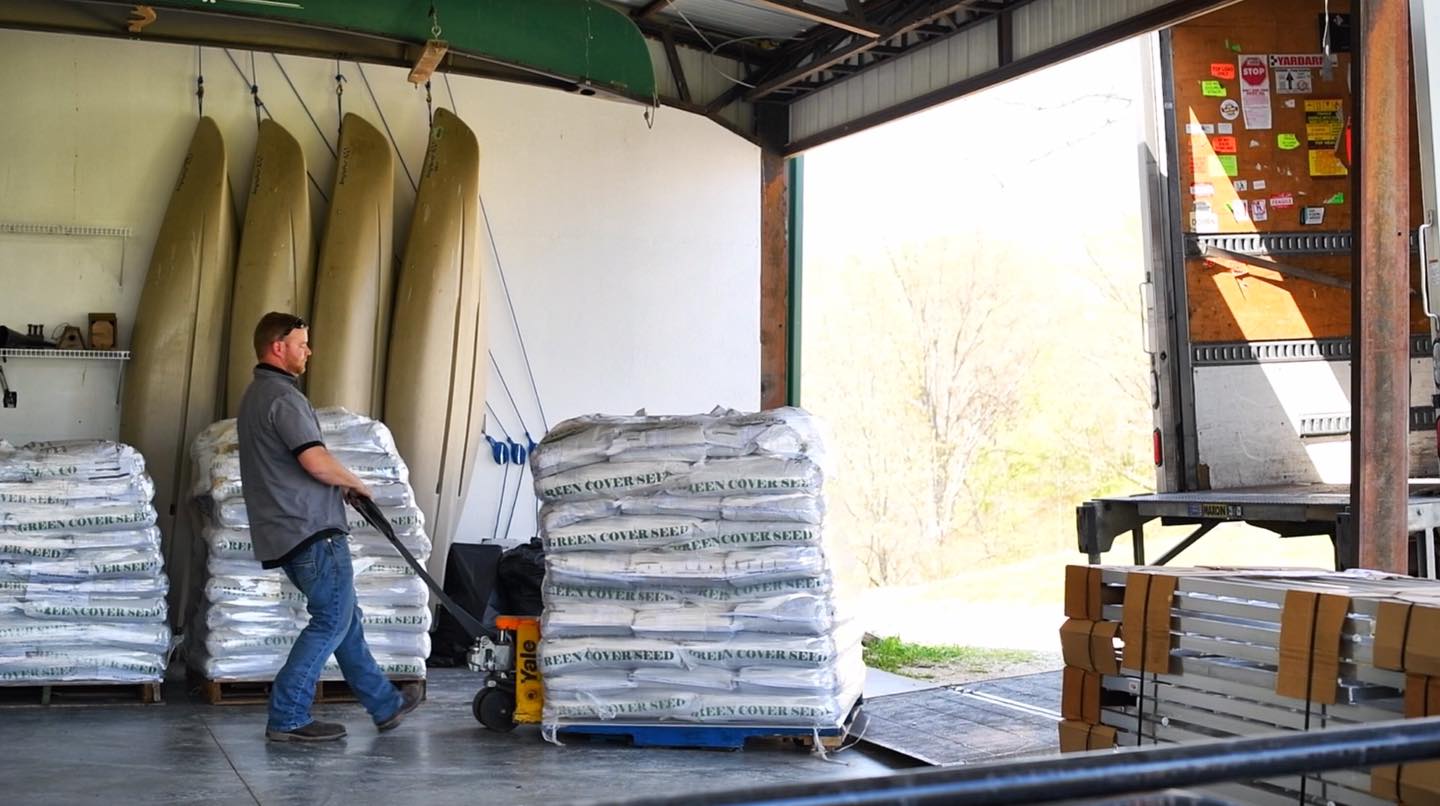
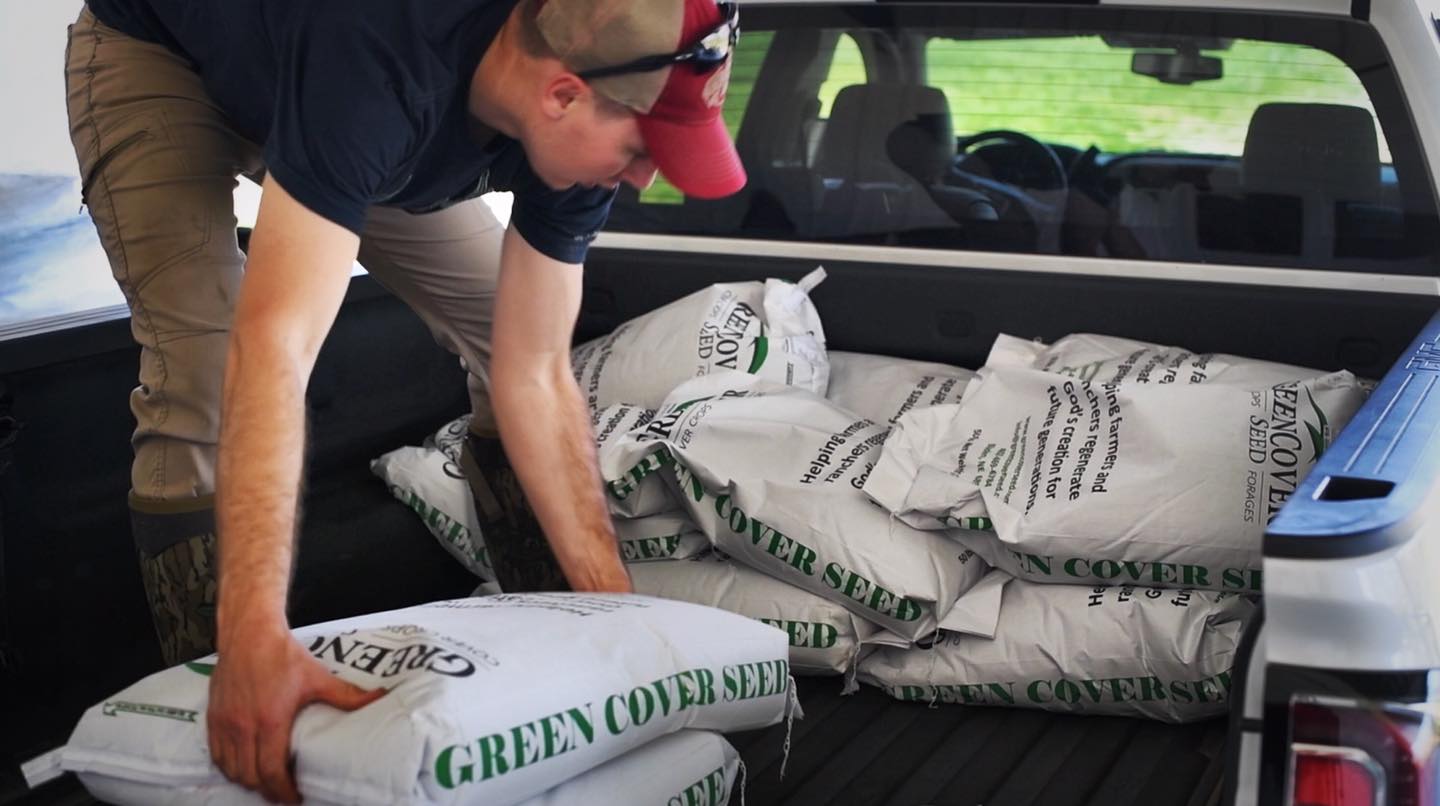
We’re monitoring soil conditions daily/watching the weather and hope to be planting soon. We want to make sure the soil temperature is warm enough. Here we can get away with planting earlier when planting green; when we’re not using as much synthetic fertilizer or herbicides or other products. Here at The Proving Grounds we have a lot of soil life — earthworms and bacteria. And they’re activity and respiration warms up the soil.
Soil health can be extremely complicated. But we can break it down really simply. It’s important to always keep the soil covered. Bare soil, naked soil, can be eroded. It can get too hot or too cold and it doesn’t hold soil moisture.
There are benefits to having a living root in the soil as many days as possible. And that living root, again, is using the top of the plant – photosynthesis – to pump very valuable foods and other items into the soil for the soil biology. And in turn, the soil biology is making the plant healthier.
At least during a portion of the year, there should be a large variety of plants having different root sizes and depths and, really important, different leaf sizes and different leaf heights. This will serve to capture all that sun before it hits the ground.
That diversity of plants also has different root structures. Some of them will be very deep and strong which will break up hard pans and allow moisture to move up and down through the soil as needed.
Following some simple principles in your food plot can mean you’ll have way healthier soil, healthier plants, larger deer and attract more deer in front of your stand.
It all starts with the simple soil health principles. Now, can you do this with synthetic inputs? Yes, of course you can. But, there’s a cost to that.
Tillage always means erosion; synthetic inputs usually end up in somebody’s water system somewhere. Following the natural system I call “The Release Process” is the healthiest and, in the long run, the least expensive process.
Check out Green Cover Seeds for the food plot blends we will be using this year. We’ll be bringing you more videos this spring with details on how to establish the best food plots at lower cost and that are better for the soil, the environment, and the wildlife!
Better Hunting for 120 Acres That Was Logged 10 Years Ago
Daniel recently worked with a landowner over the phone to develop a habitat and hunting improvement plan. This 120 acres is primarily hardwood timber that was logged 10 years ago.
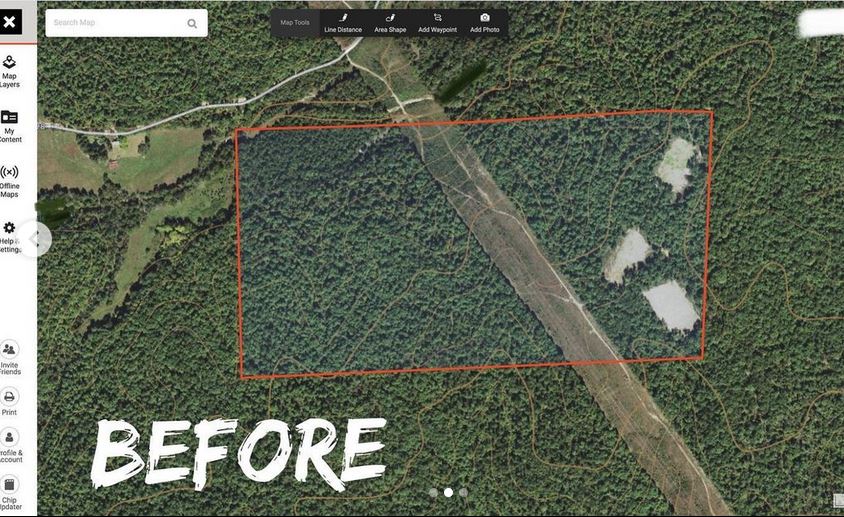
There is currently little food (the current food plots have been browsed lip high) and no quality cover on the property. However, Daniel laid out several larger food plots to provide deer with more quality food and strategically designed smaller plots to act as staging areas. This design created a lot of edge and MANY bottlenecks. Once implemented, this property will hunt much better!
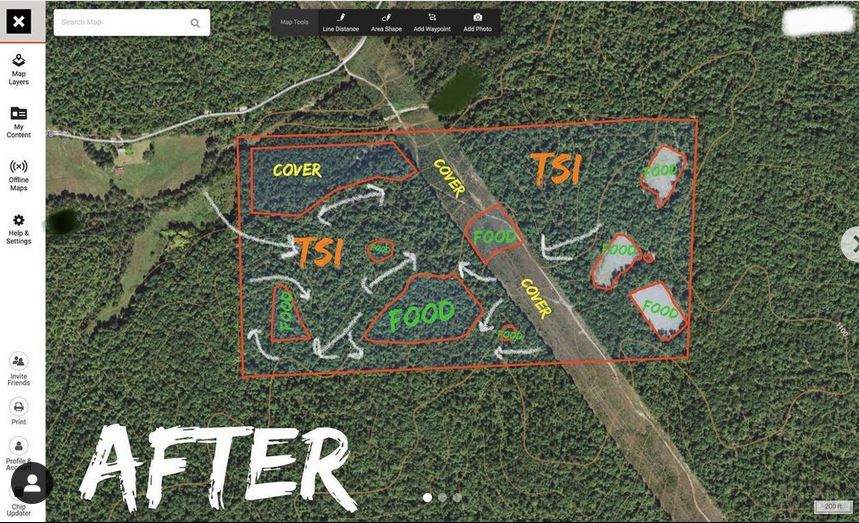
Daniel also prescribed that the low quality hardwood trees be terminated to allow more sunlight to reach the ground and encourage native grasses and forbs- creating both quality cover and browse. During this consult, they discussed the steps of prescribed fire and how to not only convert the timber to quality habitat but maintain it.
We are very excited to hear updates from the landowner as he begins implementing the plan and enjoys great hunting opportunities!
Clearing Trees to Make a New Food Plot
A wildlife management consulting client recently asked: On the Food Plots that we are going to make in the timber, what would you do with the trees we remove? Would you make a pile in the plots and then burn them ?
My advice to him:
The best plan is to have the trees and stumps removed and burned in the center of the plot. It takes a few tries and stirring the pile to burn everything but the stumps. Then I have the stumps buried in the center of the plot. Pictured below are the remains of one of our burn piles after creating a new food plot where the stumps remain after the burn. 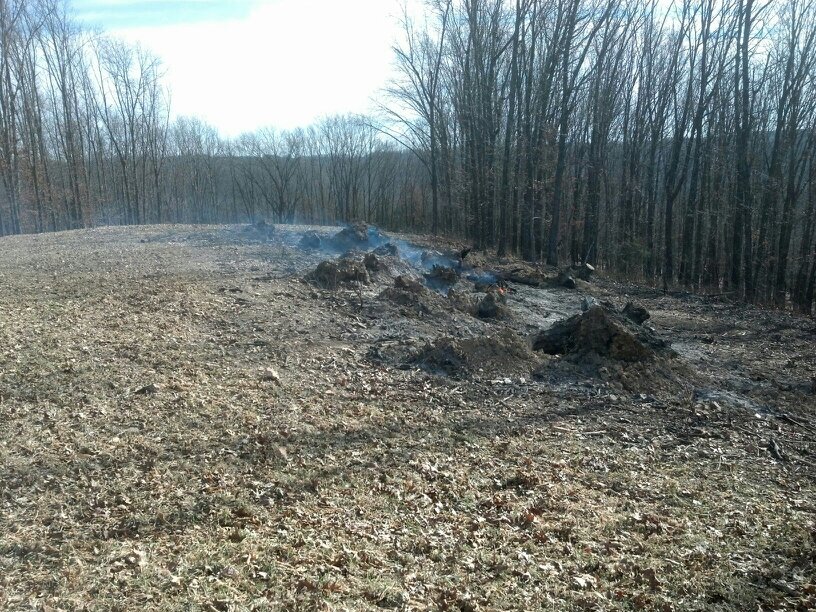
Many folks try to save a bit of expense and push the pile to the edge of the plot. The pile often becomes a coyote condo and predators are living within yards of where you wish deer to feed. For me, it’s much better to do it correctly the first time.
What to Consider When Deciding To Log or Not
Recently I was asked how someone should go about deciding whether to log a property in order to finance the purchase but also in consideration of what’s best for wildlife.
The question of whether to log or not is a personal/financial question. There’s no doubt that most hardwood logging for maximum profit results in a high-graded property. Essentially, loggers take the best and leave the rest. This would include the best mast bearing trees and leaving the immature, poor formed trees.
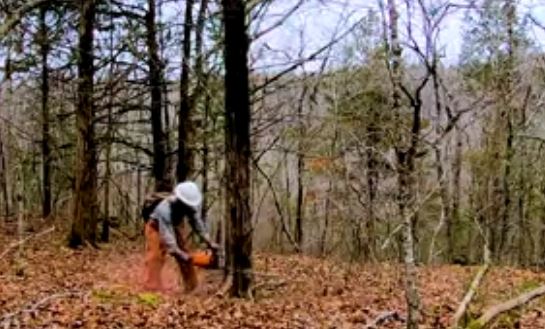
To improve the habitat, it’s much better to leave the best trees (oaks will grow very old in a healthy environment) and terminate the wounded and undesirable trees. When the forest canopy is full and not much light is reaching the soil use of double girdling and/or hack n squirting to terminate the low quality trees. The residual trees will be more productive and way more native grasses and forbs will grow (if there isn’t invasive exotics that will fill the void – such as bush honeysuckle, etc.).
When deciding whether to log or not, check out the neighborhood, properties with improved habitat attract way more critters than surrounding properties.
These are tough choices to make and I hope the above information provides a good foundation for the decision process.
Enjoy Creation,
Grant
Be Cautious About Supplemental Feeding Deer During Harsh Winters
Recently someone asked me about the hazards or benefit of trying to supplement whitetail food sources in winter, such as rolled out round bails of grass hay or such. Winter can bring on some tough conditions for whitetails. It’s important to be cautious about altering a deer’s diet – especially overnight.
There are billions of microbes (bacteria) in a deer’s rumen (four chambered stomach) including thousands of species. Each species serves a role. Populations of these microbes increase and decrease as the deer’s diet changes.
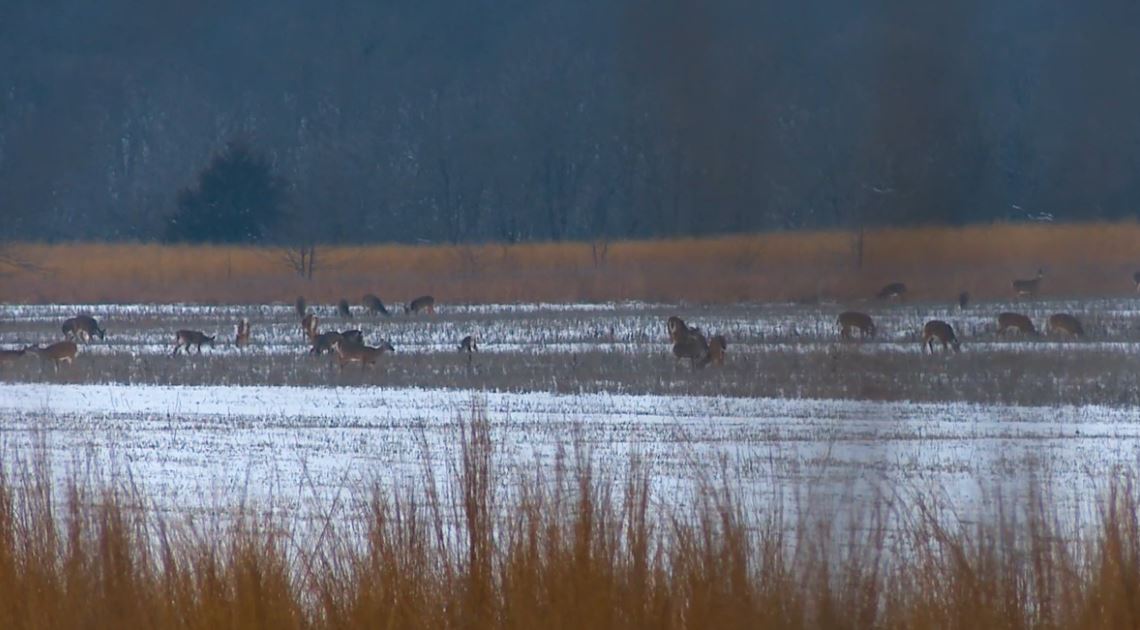
This is perfect for wild deer as food sources almost always become available at a trickle and then ramp up. For example, consider a few acorns falling during the early fall, or a bit of clover or native vegetation greening up before most does.
This trickle-passed change allows microbe populations to increase or decrease based on the food to be digested.
There are documented cases where deer have been hungry for days or weeks, then fed hay (deer don’t eat grass, but will eat alfalfa, etc.). The deer consume the new food source – often eating 2-5% of their body weight, then return to cover and die with a full belly. They couldn’t digest the new food source as the needed microbe populations had decreased.
When possible, it’s always best to start any feeding program slowly. I wouldn’t start feeding now, unless it was certain the deer were going to starve to death. Then you save the ones that survive the massive diet change.
Enjoy creation,
Grant
Aging Deer by the Jawbone with Toothwear and Replacement
We were recently asked to age this buck when a viewer sent a picture. This buck appears to be a three year old deer.
The premolars (first three teeth) indicate the deer was 2 or older and the first molar (4th tooth) shows more dentine compared to enamel which indicates the buck is three years old. However, the second molar shows more enamel than dentine which indicates the deer isn’t yet 4. Based on the tooth wear and replacement technique, we estimate this deer was three years old.
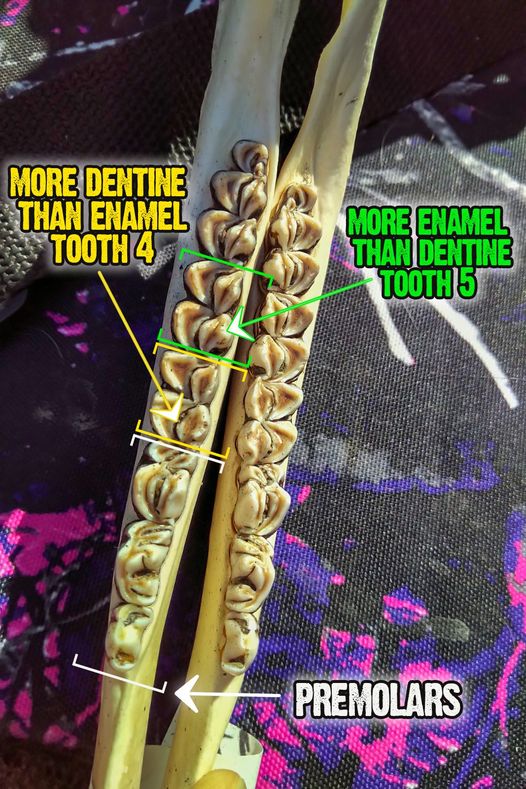
If you are looking to age a deer by the jawbone, seek out a good biologist close to you that can provide an accurate estimate. Plus, there are gads of good illustrations and descriptions about how to age deer using their lower jaw online. One such source is the University of Missouri Extension.
Enjoy Creation,
Grant
Why Did This Deer Have White Hooves?
If you’ve ever seen a deer with partially white hooves you’ve probably wondered what caused this.
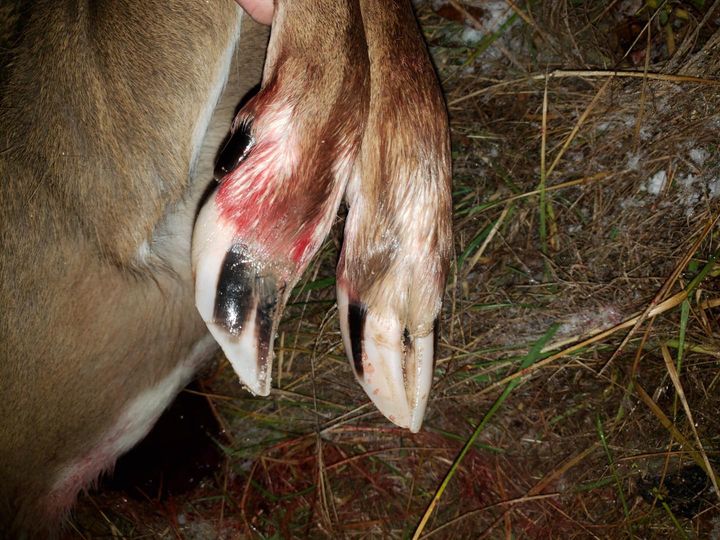 Photo: Prostaffer Cody Kraut
Photo: Prostaffer Cody Kraut
White hooves can be caused by a past injury (but that’s usually limited to one foot) or being piebald. However, this deer showed no other piebald characteristics. Therefore, this could have been caused by a healing from EHD or foundering.
When we posted this example of a deer with white hooves on FaceBook many of our followers shared their own images of deer with abnormal hooves or dew claws. See those photos at this LINK.
Enjoy Creation!
Grant
Better Understand Where and How Scent is Carried
Recently we saw a great example of the difficulty of hunting where there are strong thermals. There are several great thermal lessons in this 1 minute video (this video has been sped up x5) along with a still image below showing the fog floating.
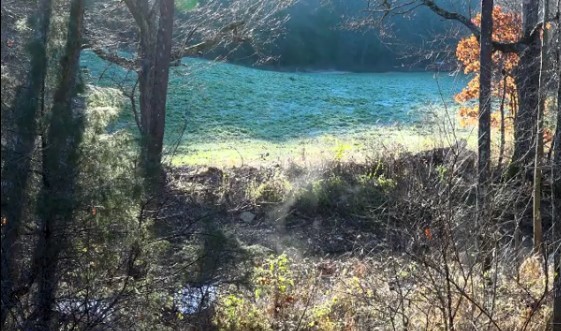
1. Cool air is heavier than warm air and sinks to the lowest point. The creek shown here is the lowest point. That morning, cool air was falling down the mountain and sucked downstream -north to south (left to right). The wind that morning was almost nonexistent but forecasted from the south. Because the wind was low, thermals were able to dominate the direction of air movement. In this case, air was moving opposite the forecasted wind direction.
2. Air was pulled down the creek because it was cool. However, something else happened. The sun began warming air, making it lighter. As the air was pulled downstream it also began to rise.
3. As the sun continued to warm the air, the air shifted and was pulled upstream several times. This is a great example of what happens when cool and warm air mix. The air churns and its path is not predicable- moving up and down, back and forth.
Hunters can apply these observations and lessons when hunting. Understanding how cool air sinks, warm air rises, and how thermals churn/mix when both cool and warm air collide can help hunters better understand where and how scent is carried.
Enjoy creation,
The GrowingDeer.tv team
Setting Up for a New Season of Trapping Nest Predators!
We recently set several Duke cage traps! When selecting trap locations, we consider how we can use thermals to attract more critters to our trap.
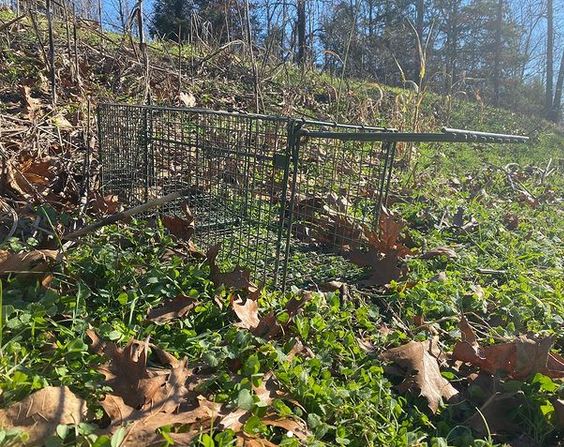
Critters often travel along interior roads, making interior road systems great places for traps. Check out the OnX map to see how we use thermals and interior road systems to make the trap line more successful and easier to run!
Hunting a Utility Easement Overlook
ProStaffer Philip Brown has been hunting at his farm in Arkansas. One of his strategies has been overlooking a utility easement running through the hardwood timber. He’s also planted a food plot in the easement to help slow deer down as they cross (grabbing a bite to eat on their way).
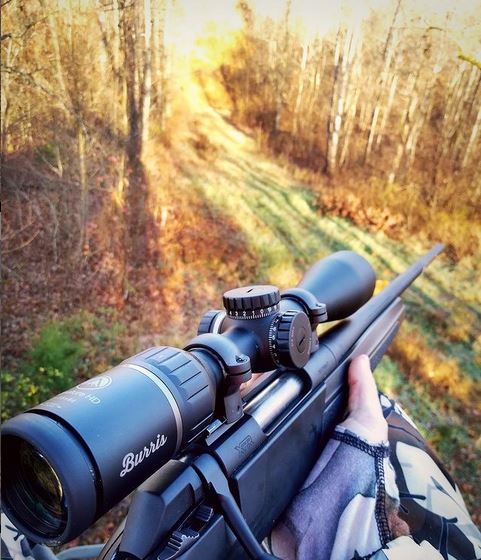
He’s seen a lot of deer but not the buck he’s hunting. This type of strategy is very effective for seeing critters but can require hunters to put their time in if targeting a specific buck. We hope Philip’s hitlist buck crosses soon!





















